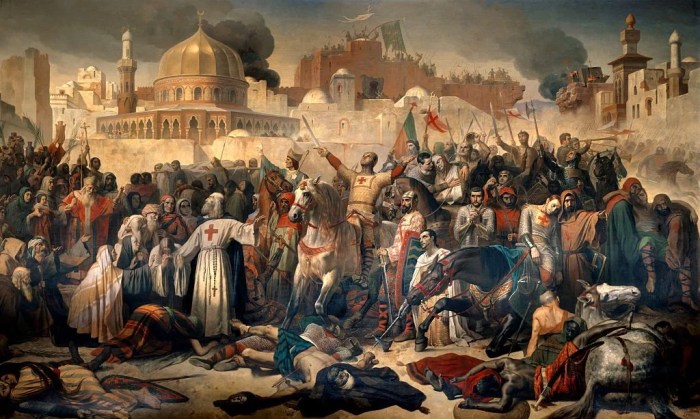Primary sources for the Crusades provide an invaluable window into this transformative era, offering firsthand accounts and perspectives that illuminate the motivations, experiences, and consequences of these pivotal events.
From chronicles and letters to archaeological remains and legal documents, the diverse range of primary sources sheds light on the complexities of the Crusades, revealing the interplay of religious fervor, political ambitions, and cultural encounters.
Definition of Primary Sources: Primary Sources For The Crusades
Primary sources are firsthand accounts or artifacts that provide direct evidence about a historical event or period. They are essential for historical research as they allow historians to access the original thoughts, ideas, and experiences of those who lived through the events they are studying.
For the Crusades, primary sources include:
- Chronicles and histories written by eyewitnesses or near-contemporaries
- Letters, diaries, and other personal accounts
- Official documents, such as treaties, charters, and papal bulls
- Architectural remains, such as castles, churches, and fortifications
- Art and artifacts, such as paintings, sculptures, and coins
Types of Primary Sources for the Crusades
Chronicles and historiesprovide narrative accounts of the Crusades, often written by participants or those who had access to firsthand information. They can be valuable for understanding the events of the Crusades, but they may also be biased or inaccurate.
Letters, diaries, and other personal accountsoffer more intimate insights into the experiences of individuals during the Crusades. They can provide valuable information about the motivations, fears, and daily lives of the Crusaders.
Official documents, such as treaties, charters, and papal bulls, provide legal and administrative records of the Crusades. They can be useful for understanding the political and diplomatic aspects of the Crusades.
Architectural remains, such as castles, churches, and fortifications, offer physical evidence of the Crusades. They can provide insights into the military strategies and engineering skills of the Crusaders.
Art and artifacts, such as paintings, sculptures, and coins, can provide visual representations of the Crusades. They can offer insights into the religious beliefs, cultural practices, and daily lives of the Crusaders.
Locations of Primary Sources

Major repositories and archives where primary sources on the Crusades can be found include:
- The Vatican Libraryin Rome, Italy
- The British Libraryin London, England
- The Bibliothèque nationale de Francein Paris, France
- The Bayerische Staatsbibliothekin Munich, Germany
- The Österreichische Nationalbibliothekin Vienna, Austria
These institutions hold vast collections of manuscripts, books, and other primary sources related to the Crusades.
Analysis and Interpretation of Primary Sources
Analyzing and interpreting primary sources is a complex process that requires careful consideration of the context, perspective, and reliability of the source.
Historians use a variety of methods to analyze primary sources, including:
- Textual analysis: Examining the language, structure, and style of a text to identify its meaning and significance.
- Contextual analysis: Placing a text within its historical and cultural context to understand its purpose and impact.
- Comparative analysis: Comparing different sources to identify similarities and differences, and to corroborate or challenge information.
Examples of Primary Source Analysis

One example of primary source analysis is the study of the letters of Peter the Venerable, Abbot of Cluny, written during the Second Crusade. These letters provide valuable insights into the motivations, fears, and experiences of the Crusaders.
By analyzing the language, structure, and content of these letters, historians have been able to identify Peter’s concerns about the Crusade, his hopes for its success, and his reflections on the challenges faced by the Crusaders.
This analysis has helped historians to better understand the motivations and experiences of the Crusaders, and to gain a more nuanced understanding of the Second Crusade.
Detailed FAQs
What are the key types of primary sources for the Crusades?
Chronicles, letters, legal documents, archaeological remains, and art and architecture are among the primary sources used to study the Crusades.
Where are the major repositories of primary sources on the Crusades located?
Major repositories include the Vatican Library, the British Library, and the Bibliothèque nationale de France, among others.
How do historians analyze and interpret primary sources?
Historians use a range of methodologies to analyze primary sources, including textual analysis, contextualization, and comparative analysis.